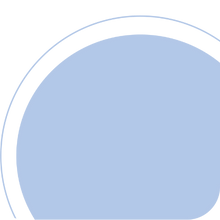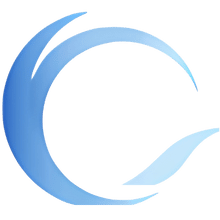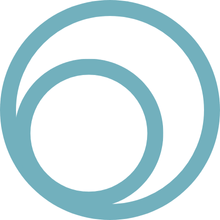Ptyrigiums Incisions


Pterygium is that pink, fleshy growth on the surface of the eye. It’s not just a cosmetic issue—it can cause irritation, discomfort, and even blur your vision if it spreads over the cornea. That’s why the way it’s removed matters. Understanding how the incisions are made helps explain how our oculoplastic surgeon restores both the look and function of your eye. Associated Eye Physicians & Surgeons of NJ proudly offers eye care at four convenient locations: Belleville serving Essex County, Rahway serving Middlesex and Union Counties, Jersey City serving Hudson County, and Union serving Union County.

Dr. Taj G. Khan is a board-certified ophthalmologist and Fellow of the American College of Surgeons, with a passion for enhancing both vision and appearance.
Understanding Ptyrigiums Incisions
Pterygium incisions are precise cuts made to remove abnormal tissue without harming the healthy parts of your eye. These cuts aren’t rushed—they’re carefully planned to make sure all the problem tissue is taken out. When our oculoplastic surgeon makes these incisions, the goal is to protect the natural shape of your eye and reduce scarring. That matters for both your vision and how your eye looks after healing.




Comparison of Traditional Incision Methods and Modern No-Stitch Techniques
Post-Surgical Monitoring and Incision Planning
After the surgery, careful monitoring is essential to ensure that the incisions heal properly and that the conjunctival autograft remains securely in place. During follow-up visits, our oculoplastic surgeon gently examine the incision sites to detect any signs of healing issues or recurrence at an early stage. These examinations are important to confirm that the purpose of the incisions—both in terms of complete pterygium removal and optimal placement of the autograft—was fully achieved during surgery.
This ongoing monitoring is a testament to the commitment our oculoplastic surgeon have to your long-term eye health. A successful incision not only removes the immediate threat posed by the pterygium but also establishes a healthier environment for future tissue integrity. By ensuring that every detail is checked along the postoperative timeline, our professionals help secure a lasting solution that protects your vision and enhances your natural appearance.




Postoperative Care and Healing
Healing Timeline After Incisions
Healing after pterygium surgery takes time and looks a little different for everyone. Right after the procedure, your eye may be covered with a protective pad to keep the graft and incision sites safe. It’s normal to feel some tenderness or mild irritation in the first few days.
Thanks to precise incisions and modern adhesives, recovery is usually faster and more comfortable than with older methods. Most people see a big improvement in how their eye looks and feels within two to three weeks. As the tissue heals, it blends in smoothly with the rest of the eye. This steady recovery highlights the value of good surgical technique—helping your eye look clear and refreshed in the long run.




Environmental Factors in Incision Planning
Patients often wonder, “Why does a pterygium occur in one part of my eye and not in another?” The answer lies in environmental factors and chronic irritation. Sunlight exposure plays a major role, especially the light that reflects off the nose and strikes the inner corner of the eye. This means that our oculoplastic surgeon are particularly vigilant in performing incisions in the exact area where the pterygium is most likely to have taken hold. Long-term exposure to the sun, along with factors like wind, dust, and even saltwater during swimming, can contribute to the development of these lesions. By understanding these contributing factors, our oculoplastic surgeon can tailor the incision and removal technique to ensure all affected tissue is excised while preserving the integrity and natural appearance of the eye.
Surgical Process and Autograft Procedure


Risk Reduction Through Thoughtful Incision Planning
Every surgery comes with risks, and pterygium surgery is no exception. But careful planning and precise incisions help reduce those risks. The main concerns are recurrence, infection, and inflammation.
By making each cut at the right depth and spot, the surgeon lowers the chance of leaving behind tissue that could grow back. Using tissue glue or dissolvable stitches also cuts the risk of infection. Smaller, more targeted cuts mean less damage to surrounding tissue, which helps reduce inflammation, ease discomfort, and speed up healing.
If inflammation does happen, eye drops with antibiotics or steroids can bring it down. The way we handle the cuts—plus proper follow-up care—helps protect your eyes now and over time.


Day-of-Surgery Guidance
On the day you have your pterygium surgery, here is what you can generally expect, specifically regarding the incisions and overall process:
Frequently Asked Questions about Ptyrigiums Incisions
Patients often have a number of questions regarding ptyrigiums incisions and what they can expect during and after surgery.
Here are some of the common inquiries:
Your Trusted Eye Doctors Serving Central and Northern NJ
At Associated Eye Physicians & Surgeons of New Jersey, our dedication is to your eye health and comfort. We specialize in the precise removal of pterygium, ensuring that each surgical step is carried out with careful planning and skill. With a focus on minimizing discomfort and promoting quick recovery, we aim to restore your vision while preserving the natural beauty of your eyes. Trust in our expertise for a brighter, clearer future. Experience personalized, expert eye care by scheduling an appointment with our eye doctors in Belleville, Jersey City, Rahway, or Union, NJ.
Request an Appointment
At Associated Eye Physicians of NJ, we’ve built our reputation on care that’s local, personal, and easy to get to. With offices in Belleville, Union, Jersey City, and Rahway, we’re proud to serve a wide range of communities across North and Central Jersey. Our Belleville team welcomes patients from all over Essex County, including Newark, Bloomfield, and Nutley. Rahway welcomes patients from across Middlesex and Union Counties, including nearby patients from Elizabeth, Avenel, Woodbridge, and Perth Amboy. Our Union office is a favorite for families from Union County, especially for those in Elizabeth and Cranford. And in Jersey City, we care for Hudson County residents, including our neighbors in Hoboken and Bayonne.
